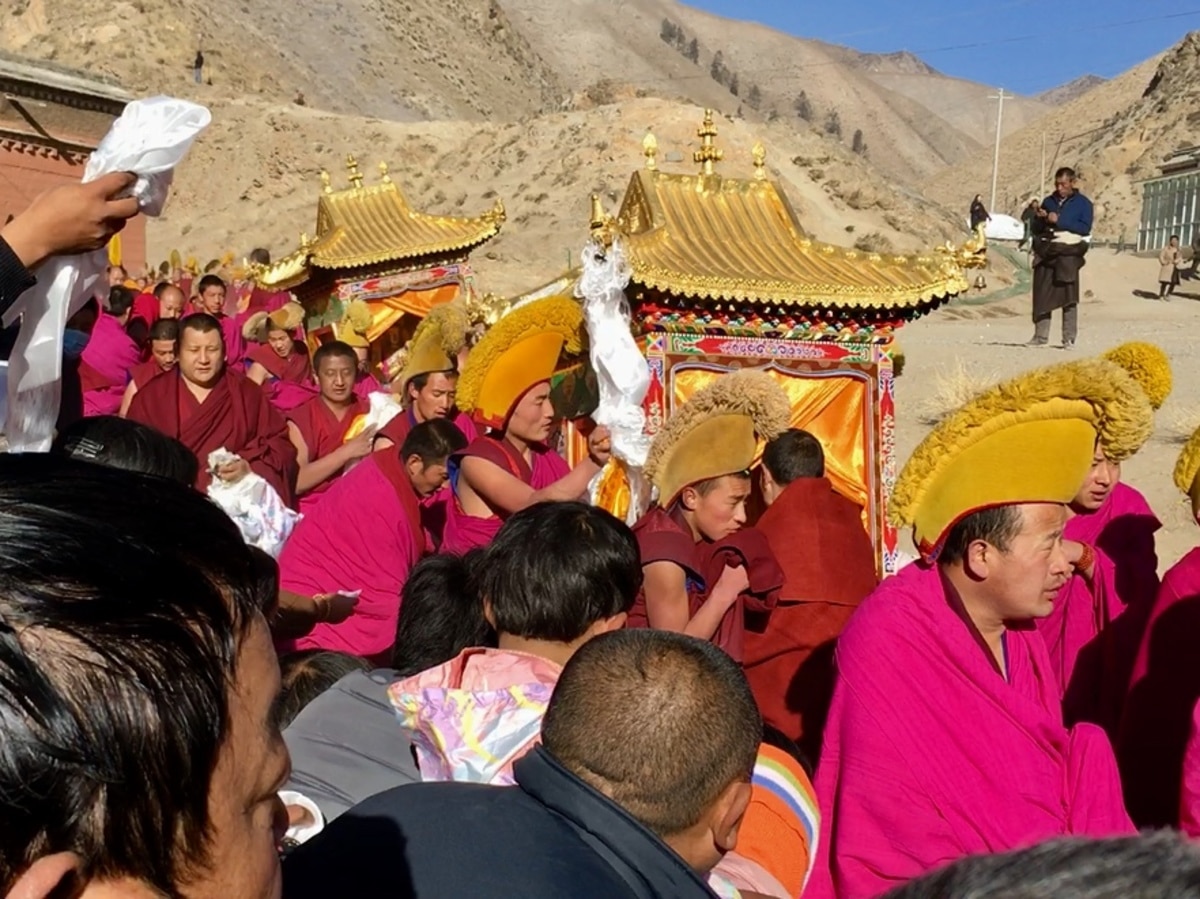Each year, as the Tibetan New Year approaches, Buddhist monks and pilgrims prepare for the Monlam Prayer Festival, a period of meditation concluding with nearly a week of extravagant ceremonies and rituals.
One of the largest such festivals is at Labrang Monastery in China’s Gansu province, one of the holiest sites in Tibetan Buddhism.
Nearly a year after visiting, I’m still amazed by memories of the shimmering silks of the monastery’s giant thangka tapestry, the elaborate costumes of ritual dancers, and the painstakingly hand-carved details of statues and sacred icons sculpted entirely out of yak butter.

It shouldn’t take much convincing to pack your bags and go. For me, I only had to look at pictures of the previous year’s celebrations to decide in a heartbeat that I had to witness the next one in person.
But if you need a little more push, here are four unbeatable opportunities you can expect from Labrang’s Monlam.
1. Amazing photo opportunities

The final four days of the Monlam festival are a feast for the eyes – and for the camera lens as well.
No matter where you turn, prepare to be surrounded by stunning colors, from the sea of deep crimson as the monks of Labrang assemble for the next ceremony to the deep blue of a cloudless winter sky.
It’s easy to find yourself mesmerized by the visual feast that at times seems to come at you from every angle, and it can be hard to decide whether to snap away with your camera or simply sit back and soak up the experience.
And once each day’s rituals are completed, the people watching is enough to keep you occupied all day. Across China, I’ve never found another place where nearly everyone is dressed in traditional garb, not as a tourist gimmick or a conscious effort to revive old traditions, but as an ordinary part of their daily lives.
2. Witness the power of faith

The religious devotion of the Tibetan people may seem like a cliché, but when you find yourself face-to-face with it, the effect is overwhelming.
The most striking example is the pilgrims journeying to the monastery on foot and on bended knee, bowing and prostrating with every step. Standing in prayer at the entrance to Labrang, their worn leather aprons and tattered, padded sleeves bear witness to their many miles and months of devotion.
But beyond such dramatic acts of faith, the beauty is often in the smallest details: the care with which old ladies scoop spoonfuls of yak butter to fuel the lamps flickering inside darkened shrines, or the furrowed brows of the faithful writing the names of deceased loved ones on slips of paper for the monks to read during their morning prayers.
3. Make new Tibetan friends… lots of them!

The one thing that makes Monlam at Labrang unique is the chance to mix with the Tibetans who have come from across Gansu and the neighboring provinces on pilgrimage.
With no restrictions on foreign travelers, you’re free to go wherever and talk to whomever you please.
While I had heard stories about Tibetan hospitality before, I had always taken them with a grain of salt, chalking them up to typical travelers’ exaggeration.
Two days later, after eating my second home-cooked meal with a Tibetan family I had randomly met while exploring the monastery or waiting for the next ceremony to start, I began to reconsider.
Surrounded by crowds in a place that rarely sees a non-Chinese face, you’ll find plenty of people eager to make new friends, in broken Mandarin or even surprisingly fluent English, happy to share their lives and culture, and learn about yours.
4. Discover the surprising diversity of China

Gansu is one of China’s most ethnically diverse provinces. Beyond its large Tibetan community, the region provides a fascinating look at how even in one small corner of the country, different religions and ways of life coexist and intertwine.
Along the six hour bus ride from Lanzhou, the capital of Gansu, I sat next to Muslim men in white skullcaps and their wives, wearing not headscarves, but tall, starched purple headdresses almost resembling chefs’ hats.
As the bus rumbled past country villages, we passed by blue-robed Taoist priests on their way to conduct new year rituals, and found ourselves stuck in traffic by the grand opening of a new store, celebrated with an amateur brass band playing before a red bunting-draped portrait of Chairman Mao.
What are you waiting for?
With nearly a year to go until the festival comes again, now is the perfect time to start thinking about your trip.
The climax of the Monlam festival lasts for four days, starting from the 13th day of the new year on the lunar calendar and ending on the 16th day.
In 2019, this means the ceremonies will run from February 17 to 20.
Author bio: Micheal Evans

